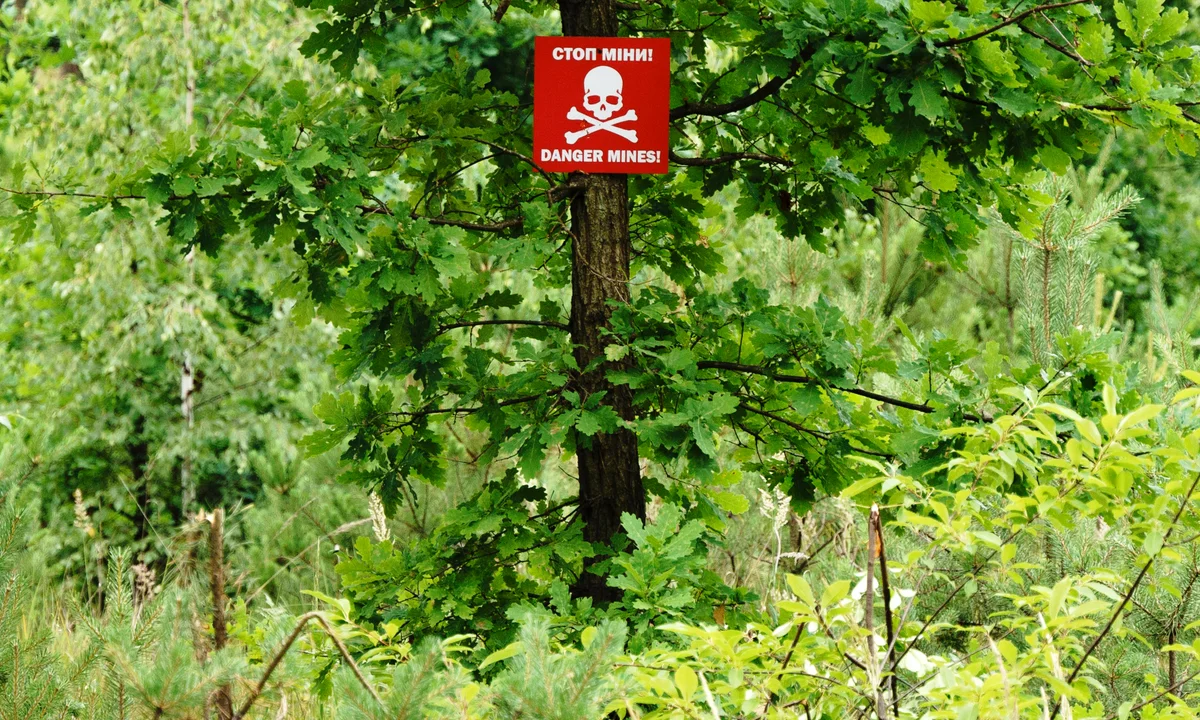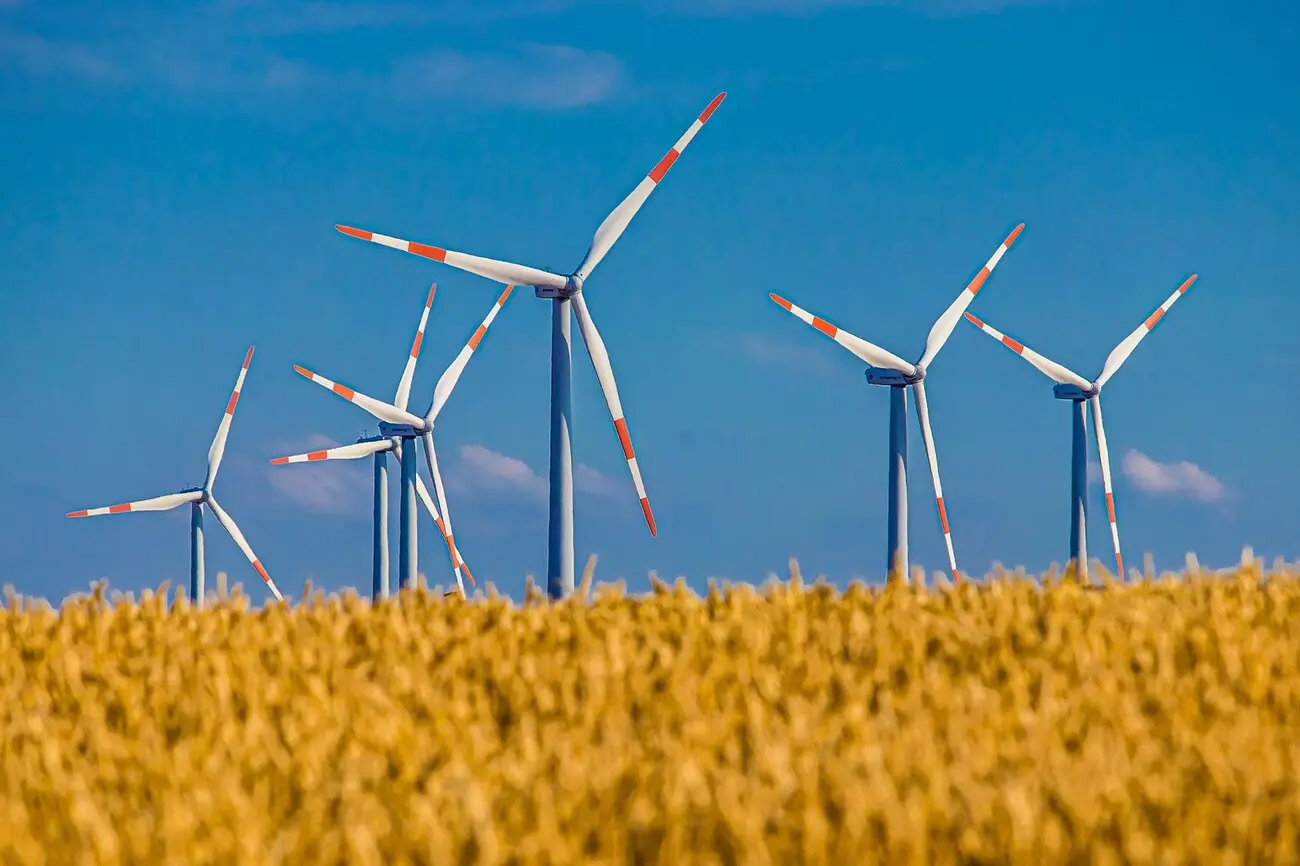Fyodor Severyanin
Translated by Jennifer Castner
The topics of renewable energy, further decarbonization (even in wartime), and the “green” recovery of Ukraine were central themes for events in the Ukrainian pavilion at the UN COP28 Climate Conference in Dubai this month.
Ukraine’s pavilion at COP28
At the 28th UN Climate Change conference (COP28) in Dubai in December, Ukraine presented its pavilion for the second time ever. The goal was to demonstrate the scale of environmental damage caused by Russia’s full-scale invasion of Ukraine and propose recovery measures. One of the key messages heard in the pavilion was that despite the war, Ukraine is already actively building its green future.
In particular, the country presented an already implemented renewable energy project – the Tiligul wind power plant, built during the war. In addition, this year the pavilion also announced the launch of the Global Platform for Assessing Environmental Damage from Military Actions, an initiative announced by Ukraine’s President at COP27 in Egypt.
“Despite the difficulties of war, our commitment to a green transition in Ukraine remains unchanged. Indeed, the war is forcing us to transform our energy system even faster, as we realize that renewable energy systems are much more sustainable and secure. DTEK recently completed construction of a wind farm – Tiligul Wind Power Plant – just a few miles from the front line, and we will quadruple its current size. If Ukraine can do this today, think about what can be achieved in peacetime,” said Maxim Timchenko, CEO of DTEK, at the event.
In 2022, active work began in Ukraine on plans for the country’s restoration, especially in Kyiv, Chernihiv, and Sumy regions. The main focus is on a green recovery, given the damage caused to the environment by military action. One such initiative is a renewable energy program implemented by the NGO Ecoclub. The work includes installation of solar power plants in hospitals, and implements an European Union program replacing incandescent lighting with LED lighting to increase energy efficiency.
The European Commission and other international organizations are already contributing to the reconstruction of Ukraine. In 2023, the European Bank for Reconstruction and Development (EBRD) supported Ukraine’s energy recovery, entering into a memorandum of understanding with Ukrainian energy companies. The United Kingdom is contributing £10 million million to Ukraine’s green recovery through the “Innovate Ukraine” competition, a competitive grant program aimed at developing innovative technologies in the field of sustainable development and energy.
Ukraine’s decarbonization
In October 2023, the environmental organization Ecoaction presented an analysis of the state of affairs in the field of decarbonization in Ukraine.
Alongside a number of other nations, in 2021 Ukraine announced its intention to achieve climate neutrality by 2060. In July 2021, the government set a goal of reducing greenhouse gas emissions by 65% (of 1990 levels) by 2030. It is worth noting that by this time the country had already reduced its emissions by 62.5%, largely due to the industrial decline following the collapse of the Soviet Union rather than thanks to any targeted actions.
The government’s Decarbonisation and Energy Efficiency Transformation Fund (DEETF) was created in 2023 and will be partly financed by a CO2 tax. First of foremost, that tax will be paid by large industrial enterprises. Prior to the fund’s creation, these tax revenues fed straight into state coffers without being earmarked for a specific purpose.
Currently, the tax rate on CO2 emissions is 30 hryvnia per metric ton. These revenues from large industrial enterprises will not cover all of the anticipated costs of decarbonization – it is hoped that international loans and grants can be used to bridge the gap.
Starting January 1, 2024, the DEETF will allocate funds to the development of renewable energy sources, alternative fuels, and the implementation of measures to reduce greenhouse gas (GHG) emissions.
It is noteworthy that despite the introduction of Ukraine’s Law No. 377-IX “On the principles for monitoring, reporting, and verifying GHG emissions” on January 1, 2021, Ukraine still lacks an effective emission monitoring system. As experts on hand in the Ukrainian pavilion noted, this greatly slows the process of assessing emissions and subsequent decarbonization. Running an effective Emissions Trading System (ETS) requires robust monitoring to provide an accurate picture.
That law does seek to harmonize legislation with European standards, including implementing the provisions of the EU’s Emissions Trading Scheme Directive No. 2003/87/EC. That directive offers a promising solution to the problem, but requires effective implementation.
The expert authors of Ecoaction’s report note that Russia’s war on Ukraine prevents that directive from being fully implemented domestically. The Ministry of Ecology reports, as of May 2023, only 482 facilities (largely in the energy, industry and transportations sectors) were included in the Unified Register of MECs, representing just 27% of facilities emitting greenhouse gases in the country.
Only 109 reports monitoring of GHG emissions from registered installations were submitted, a number that represents just 6% of the total number of emitting facility operators.
Greenhouse gas emissions in Ukraine
According to the National Inventory of Anthropogenic Emissions and Sinks of Greenhouse Gases in Ukraine, in 2021, total GHG emissions amounted to 341.5 million tons of CO2 equivalent (CO2e). The largest sectors contributing the most to these emissions are: energy along with transport (64% of total emissions), industry (18%), and agriculture (14%).
Following, each sector is investigated more deeply for its contribution to greenhouse gas emissions.
Energy in Ukraine
Ukraine’s energy sector is the largest emitter of GHG and, if the EU’s experience is anything to go by, decarbonizing this sector is challenging. However, in Ukraine the situation began to change dramatically after the start of the full-scale Russian invasion.
Beginning in early October 2022, Ukraine’s energy infrastructure came under Russian attack, with more than 1,500 missiles, drones, and artillery shells fired. More than a hundred missiles hit large energy facilities. Impacts to infrastructure reduced Ukraine’s generating capacity by 61.4% in 2022, falling from 36 GW to just 13.9 GW. At the same time, about 10 GW of installed capacity remained in occupied territories, including Zaporizhzhia Nuclear Power Plant (generating capacity of 6 GW).
Green energy production was also affected by the war: most renewable energy generation was taking place in southern Ukraine in areas occupied since the beginning of the war. Russia’s invasion meant that 90% of windpower and 40-50% of solar power generation was shut down, damaged, or destroyed. Today, renewable energy infrastructure is gradually being restored, but the damage was serious and restoration will take time.
Prior to the start of the war, there were 15 power units at four nuclear power plants in Ukraine. 12 of them were already beyond their service life, having already been in operation for more than 30 years. Although nuclear energy is included in the EU’s green taxonomy as a “transition” sector, discussions remain relevant. Ecologists and environmental activists hold that nuclear power is not environmentally sustainable and is associated with many dangers. Russia’s full-scale invasion demonstrated one danger quite clearly, in seizing nuclear power plants at Zaporizhzhia and Chornobyl as well as shelling of the South Ukrainian Nuclear Power Plant.
Decarbonizing the transportation sector
Before the full-scale invasion began, the transport sector accounted for approximately 12% of all GHG emissions. 2019 data indicates that 71% of transport sector emissions came from road transportation, 12% from gas transportation and 17% from off-road transport (agricultural equipment, etc.). Additionally, many vehicles used in Ukraine are outdated and lack fuel efficiency, resulting in added negative impacts on the environment and public health.
Due again to Russia’s occupation of parts of southern and eastern Ukraine and to war-related changes in the transportation system, GHG emissions in this sector have also changed, but no precise data is available.
The transportation sector offers great potential when it comes to reducing emissions. Experts suggest that to decarbonize this sector, efforts must be made to:
- Develop public transportation to replace private cars, the main source of transportation-related emissions;
- Reduce the use of private vehicles powered by gasoline and diesel engines;
- Encourage the use of bicycles and develop bicycling infrastructure;
- Increase the share of passenger and cargo transportation by rail;
- Electrify railway tracks;
- Promote and provide opportunities for walking by improving pedestrian crossings and developing mixed-use neighborhoods.
Decarbonizing industry
In GHG emissions terms, industry was a key economic sector for Ukraine before the outbreak of military hostilities. Since then, it has suffered significantly from Russia’s full-scale invasion: Ukrainian industrial production fell by 38% in 2022, according to the World Bank data.
Prior to the war, ferrous metallurgy and the production of non-metallic mineral materials (such as cement and other construction materials) were the main sources of GHG emissions in Ukrainian industry. Since the beginning of the war, especially after the occupation of the city of Mariupol and the destruction of large metallurgical and other enterprises in the regions of Donetsk, Kharkiv and Luhansk, the balance of GHG emissions has changed significantly. At the moment, the volume of emissions remains uncertain.
Using data on pre-war levels, experts suggest the following moves to decarbonize the industrial sector:
- Implementation of a GHG emissions monitoring system in accordance with existing legislation;
- Mandatory implementation of “smart” energy management systems;
- Reducing the energy intensity of production;
- Use of global best management practices and technologies (BMP) in accordance with Law 6004-d;
- State and public-private financing of production modernization, including loans, grants, compensation for capital and operating expenses, and tax breaks;
Agriculture in Ukraine
Agriculture and livestock farming, as well as industry, occupied an important place in the Ukrainian economy before the outbreak of hostilities. In 2021, GHG emissions from this sector accounted for 14% of total emissions. Over the past decade, agriculture has seen the most significant increase in GHG emissions, increasing by almost 30% before the war.
GHG emissions from agriculture are primarily associated with the use of mineral nitrogen fertilizers, processing of agricultural waste, methane emissions from livestock, loss of organic carbon due to soil cultivation, use of fuel-powered agricultural machinery, and many other factors.
At the same time, climate change is making agriculture more vulnerable, especially in regions of central and southern Ukraine that experience higher temperatures, water shortages, and frequent extreme weather events. This creates unpredictability in crop production and has indirect impacts on emissions.
Given the intensification of these factors, measures are needed to mitigate and adapt to climate change, as well as to address new environmental challenges associated with war.
After almost two years of full-scale military aggression, approximately 470,000 hectares of agricultural land have become unusable in the de-occupied territories, as they await de-mining and restoration. Significant additional territories remain under occupation.
To decarbonize agriculture, experts also recommended the following actions:
- Support organic farming and low/no-till agriculture;
- Stimulate changes in the structure of sown areas to gain efficiencies in the use of agricultural lands;
- Remove degraded lands from cultivation;
- Implement nutrient and agrochemical management systems;
- Develop and implement a monitoring system for organic carbon content in soil;
- Produce and use solid biofuel generated from agricultural waste;
- Calculate emissions from livestock farming (including all production cycles) and track biogas production generated from livestock waste;
- Leverage information and telecommunication technologies to improve efficiency in the agriculture sector.
International collaboration
External factors motivating Ukraine towards decarbonization are even more important now than before the start of the full-scale war. Prospects for joining the European Union and the introduction of the Carbon Border Adjustment Mechanism (CBAM) are both important external factors for the country.
Under the CBAM, importing countries including Ukraine are being required to report GHG emissions resulting from the production of carbon-intensive goods (e.g., iron, steel, aluminum, fertilizer, electricity, and hydrogen) that they supply to the European Union as of 1 October 2023. From 1 January 2026, those countries will also be subject to additional duties when importing these goods. The European Union is Ukraine’s largest trading partner, and the EU’s share in foreign trade turnover was 63% in 2022.
On 14 December 2023, the European Union approved the start of negotiations for Ukraine’s accession, and consequently the EU’s “Green Deal” can become both an economic and political lever for the development of decarbonization projects domestically.
Data and trends aside, it is obvious that it will be only possible to start conversations about full-fledged projects to achieve climate neutrality after the war ends. Restoring Ukraine will require significant resources, which will lead, in turn, to additional CO2 emissions.
Achieving climate neutrality goals not only for Ukraine, but also for the whole of Europe depends on plans for Ukraine’s recovery and the extent to which specific “green” and climate-neutral technologies are implemented.
Main image source: IPG







